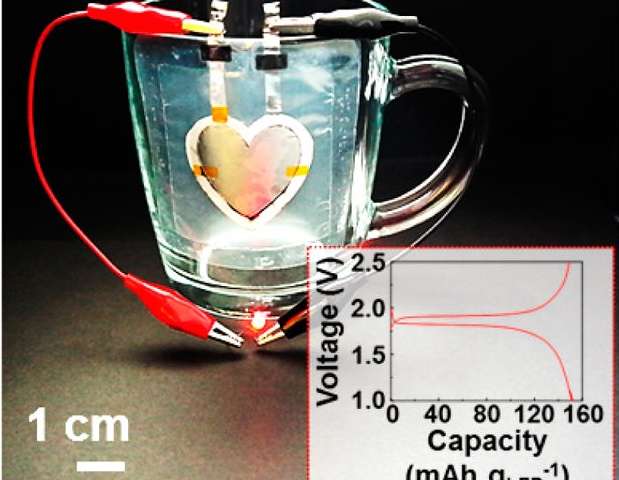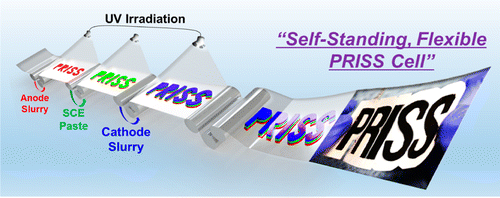 And finally–here it comes: the potential of the 3D printed battery. With the excitement and innovations that 3D printing offers the world in massive doses right now, we knew that the battery as we know would be dealt with soon.
And finally–here it comes: the potential of the 3D printed battery. With the excitement and innovations that 3D printing offers the world in massive doses right now, we knew that the battery as we know would be dealt with soon.
It doesn’t make sense to have a global conversation going on regarding cutting ties with traditional constricting technologies and a world focus on the need for self-sustainability while we are all still dependent on and running to the local hardware store for copious supplies of pricey, old-fashioned, heavy little batteries.
As technologies progress and multiply and even become steeped within one another, like 3D printing and electrical components, it makes perfect sense that batteries could be 3D printed right into innovative products busy coming down the line today like 3D printed wearables, various displays, and virtual reality pieces.
 Recently, researchers at the Department of Energy Engineering, School of Energy and Chemical Engineering, Ulsan National Institute of Science and Technology (UNIST) released a study published in Nano Letters, called ‘Printable Solid-State Lithium-Ion Batteries: A New Route toward Shape-Conformable Power Sources with Aesthetic Versatility for Flexible Electronics.’ Authored by Se-Hee Kim, Keun-Ho Choi, Sung-Ju Cho, Sinho Choi, Soojin Park, and Sang-Young Lee, the study examines the possibility of making a new class of batteries that would be useful for satisfying all the requirements for the new class of innovations we are all beginning to power up greedily around the globe.
Recently, researchers at the Department of Energy Engineering, School of Energy and Chemical Engineering, Ulsan National Institute of Science and Technology (UNIST) released a study published in Nano Letters, called ‘Printable Solid-State Lithium-Ion Batteries: A New Route toward Shape-Conformable Power Sources with Aesthetic Versatility for Flexible Electronics.’ Authored by Se-Hee Kim, Keun-Ho Choi, Sung-Ju Cho, Sinho Choi, Soojin Park, and Sang-Young Lee, the study examines the possibility of making a new class of batteries that would be useful for satisfying all the requirements for the new class of innovations we are all beginning to power up greedily around the globe.
From smart apparel to a plethora of devices with shape diversity and mobile usability, newly constructed batteries may offer the next logical step in powering them up the way they deserve. As many lightweight new products come into the marketplace and are rapidly embraced, powering them with unwieldy, short-lived, heavy batteries seems sort of out of touch. This study infers that lithium-ion batteries would be able to be printed in more convenient form–anywhere. The newly minted power source, referred to as PRISS Li-ion batteries, can be made through consecutive printing on arbitrary objects of complex geometries, leading to seriously complex forms. The researchers point out that these new sources of power would be “far beyond those achievable by conventional battery technologies.”
 A highly technical, chemical, and scientific mix of the following is involved in creating the technology for these new super batteries:
A highly technical, chemical, and scientific mix of the following is involved in creating the technology for these new super batteries:
- SCE paste
- Electrode slurry
- UV-cured triacrylate polymer
- High boiling point electrolyte
They are looking to fabricate these batteries through other progressive technologies that will possibly make them more accessible and affordable.
“To extend application fields of the printable batteries, we are currently considering a wide variety of printing techniques,” Sang-Young Lee, Professor at UNIST and leader of the project, told Phys.org. “Ink-jet and 3D printing can be recommended as a promising technology to enable the facile fabrication of multidimensional/multiscale complex-structured power sources. An urgent prerequisite to achieve this goal is that printable battery components should be precisely tuned to fulfill the rheological requirements of each printing technology, without impairing electrochemical properties. Our group has recently achieved some intriguing results on printable batteries with ink-jet and 3D printing technology, which will provide completely new application fields of rechargeable power sources that we have not yet encountered.”
With these materials, and the advantage of 3D printing, they are able to look toward removing extra steps as well as other traditional materials that would not allow for the ‘shape-conformable’ element required in the PRISS batteries. Obviously the traditional battery ‘case’ has been adapted to avoid any leakage of battery acid or other material, as well as keeping electrodes separate, but with the construction of these new forms, those issues are no longer a concern.
What’s even more amazing is that the paste and slurry mixture allows for an entirely new application; for example, conductive mixture could even be applied with stencils, offering the opportunity for decorative ideas like designs, letters, and a variety of shapes. They would also be able to power up LEDs with connectors. They are highly functioning and can retain up to 90 percent after 30 cycles; however, the scientists are still working to refine their efficiency further.
“All battery components, such as cathodes, anodes and electrolytes, can be printed on arbitrary objects of complex geometries, thereby enabling the seamless integration of shape-conformable solid-state rechargeable batteries with various form factors into complex-shaped (such as curvilinear) objects,” said Lee.
 The scientists were able to demonstrate the innovation applications with a heart-shaped battery, as well as one that spelled out PRISS, appropriately.
The scientists were able to demonstrate the innovation applications with a heart-shaped battery, as well as one that spelled out PRISS, appropriately.
“Electrochemical behavior of PRISS batteries is elucidated via an in-depth analysis of cell impedance, which provides a theoretical basis to enable sustainable improvement of cell performance,” state the researchers in their paper. “We envision that PRISS batteries hold great promise as a reliable and scalable platform technology to open a new concept of cell architecture and fabrication route toward flexible power sources with exceptional shape conformability and aesthetic versatility.”
Discuss your thoughts on these new batteries and the potential for changing another technology with the power of 3D printing in the South Korean Researchers Redesign the Conventional Battery forum over at 3DPB.com.
Subscribe to Our Email Newsletter
Stay up-to-date on all the latest news from the 3D printing industry and receive information and offers from third party vendors.
You May Also Like
3D Printing Unpeeled: New Arkema Material for HP, Saddle and Macro MEMS
A new Arkema material for MJF is said to reduce costs per part by up to 25% and have an 85% reusability ratio. HP 3D HR PA 12 S has been...
3D Printing News Briefs, January 20, 2024: FDM, LPBF, Underwater 3D Printer, Racing, & More
We’re starting off with a process certification in today’s 3D Printing News Briefs, and then moving on to research about solute trapping, laser powder bed fusion, and then moving on...
3D Printing Webinar and Event Roundup: December 3, 2023
We’ve got plenty of events and webinars coming up for you this week! Quickparts is having a Manufacturing Roadshow, America Makes is holding a Member Town Hall, Stratafest makes two...
Formnext 2023 Day Three: Slam Dunk
I’m high—high on trade show. I’ve met numerous new faces and reconnected with old friends, creating an absolutely wonderful atmosphere. The excitement is palpable over several emerging developments. The high...































